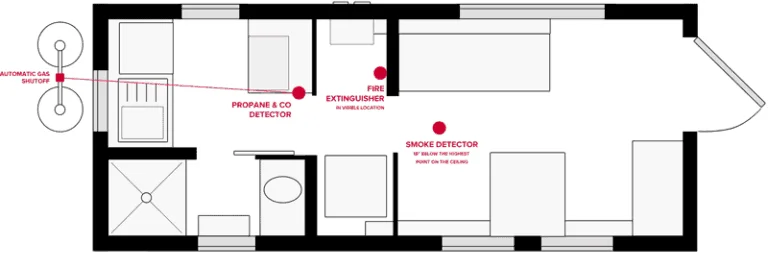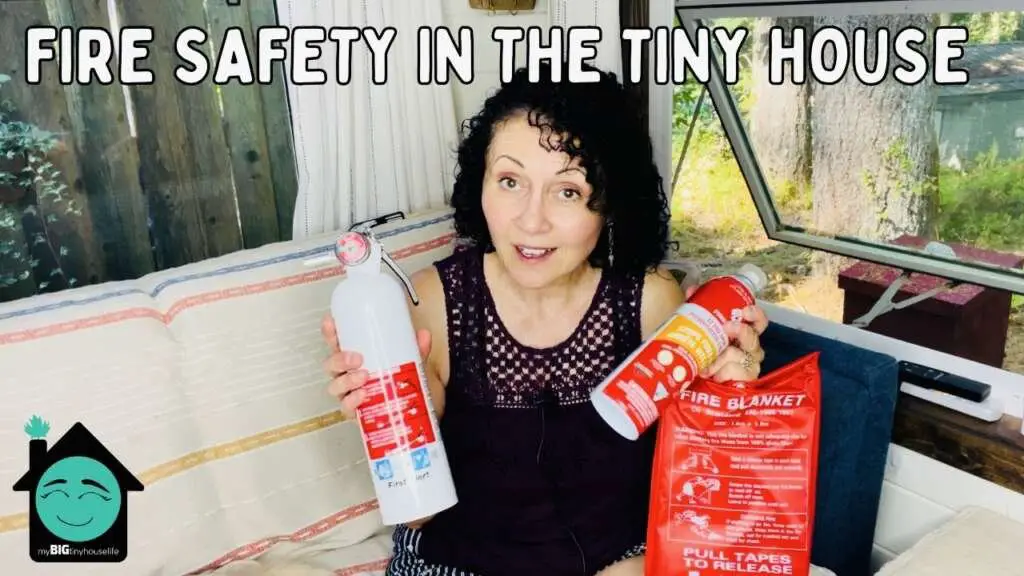Living in a tiny home can be a dream come true for many people seeking a simpler and more sustainable lifestyle. However, it is crucial to consider the fire safety aspects of these compact spaces. With limited square footage and unique design elements, tiny homes require special attention when it comes to preventing and responding to potential fire hazards. In this article, we will explore the key fire safety considerations that should be taken into account when living in a tiny home, ensuring that your cozy haven remains not only efficient and stylish but also safe and secure.
Heading 1: Fire Prevention Measures
Subheading 1-1: Fire Prevention Measures
When it comes to fire safety in a tiny home, prevention is key. Taking proactive measures to prevent fires can help ensure the safety of you and your property. Here are some important fire prevention measures to consider:
-
Keep flammable materials away from heat sources: One of the primary causes of fires is the proximity of flammable materials to heat sources. Ensure that your tiny home is free from any potential fire hazards such as curtains, paper, or wooden items placed near heaters, stoves, or open flames.
-
Install fire-resistant materials: Make sure that your tiny home is constructed with fire-resistant materials. This includes using fire-rated walls, insulation, and roofing materials. Additionally, consider using fire-resistant furniture and furnishings to further reduce the risk of fire.
-
Regularly inspect electrical systems: Faulty wiring and electrical malfunctions are common causes of fires in homes. Schedule regular inspections of your tiny home’s electrical systems to identify any potential hazards or issues. It is also essential to hire a licensed electrician to ensure that the wiring is up to code and meets safety standards.
Subheading 1-2: Fire Extinguishers and Fire Suppression Systems
Having fire extinguishers and fire suppression systems in your tiny home is crucial. These tools can help you respond effectively to small fires and prevent them from spreading. Here are some important considerations regarding fire extinguishers and fire suppression systems:
-
Choose the right type of fire extinguisher: There are different types of fire extinguishers designed to combat specific types of fires, such as those caused by flammable liquids or electrical malfunctions. It is essential to select the appropriate fire extinguisher for your tiny home based on potential fire hazards.
-
Properly maintain fire extinguishers: Regularly inspect and maintain your fire extinguishers to ensure their efficacy. Check the pressure gauge and follow the manufacturer’s guidelines for maintenance and replacement. Additionally, educate yourself on the proper use of fire extinguishers to maximize their effectiveness in case of a fire emergency.
-
Consider installing fire suppression systems: In addition to fire extinguishers, consider installing fire suppression systems in your tiny home. These systems automatically detect and suppress fires, minimizing the damage caused. Consult with a professional to determine which type of fire suppression system is suitable for your tiny home’s size and layout.
Heading 2: Electrical Safety
Subheading 2-1: Proper Wiring and Electrical Maintenance
Electrical safety is a crucial aspect of fire prevention in a tiny home. Faulty electrical systems can lead to sparks and electrical fires. Here are some considerations for maintaining electrical safety in your tiny home:
-
Hire a licensed electrician: When building or renovating your tiny home, it is essential to hire a licensed electrician to handle the electrical wiring. Licensed professionals have the knowledge and expertise to ensure that the wiring is installed correctly and meets safety regulations.
-
Regularly inspect electrical systems: Over time, electrical systems can deteriorate or develop faults. Schedule regular inspections of your tiny home’s electrical systems to identify any potential hazards. Look for signs of frayed wires, loose connections, or buzzing sounds, and address any issues promptly to prevent electrical fires.
-
Do not overload electrical circuits: Be mindful of the electrical load in your tiny home. Overloading circuits by plugging too many devices into outlets can cause overheating and increase the risk of fire. Use power strips with built-in surge protection and distribute the electrical load evenly across circuits.
Subheading 2-2: Heating Safety
Proper heating safety measures are vital in a tiny home to prevent fires and ensure the well-being of occupants. Here are some considerations for heating safety:
-
Choose safe heating options: Opt for safe heating options such as electric heaters or propane heaters specifically designed for indoor use. Avoid using open flames or unvented heating devices, as they pose a higher risk of fire and carbon monoxide poisoning.
-
Keep heating sources clear: Maintain a safe distance between heating sources and flammable materials. Keep furniture, curtains, and other combustible items at least three feet away from heaters. This helps prevent accidental ignition and reduces the risk of spreading fires.
-
Install carbon monoxide detectors: Tiny homes often have limited ventilation, increasing the likelihood of carbon monoxide buildup. Install carbon monoxide detectors to alert you to dangerous levels of this odorless and potentially lethal gas. Regularly test and replace the batteries in these detectors.
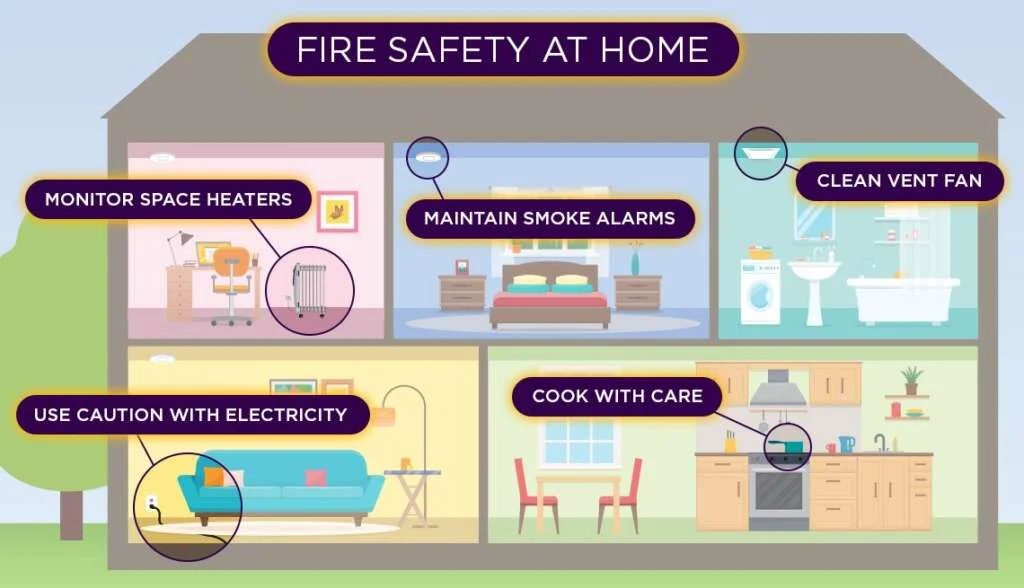
Heading 3: Use of Portable Heaters
Subheading 3-1: Proper Wiring and Electrical Maintenance
When using portable heaters in your tiny home, proper wiring and electrical maintenance are essential for fire safety. Consider the following tips:
-
Use a dedicated electrical circuit: Portable heaters draw a significant amount of power. To prevent overloading circuits and potential electrical fires, plug portable heaters into a dedicated electrical circuit. This ensures that the heater has enough power and reduces the risk of tripped circuit breakers or overheated wiring.
-
Avoid extension cords: To minimize fire hazards, avoid using extension cords with portable heaters. Extension cords can overheat and pose a fire risk. If a longer reach is needed, consult with an electrician to install additional electrical outlets.
-
Regularly inspect portable heaters: Portable heaters should be checked regularly for any signs of damage, malfunction, or loose connections. Follow the manufacturer’s instructions for maintenance and cleaning. Replace or repair damaged heaters promptly to prevent fire hazards.
Subheading 3-2: Flammable Material Storage
Proper storage of flammable materials is essential in a tiny home to minimize the risk of fire. Here’s what you need to know:
-
Store flammable materials safely: Flammable materials such as fuels, solvents, and propane tanks must be stored outside the tiny home in a well-ventilated area. Ensure that storage containers are tightly sealed and kept away from heat sources, open flames, and electrical devices.
-
Use approved storage containers: When storing flammable materials, use containers specifically designed for their safe storage. These containers are made of durable materials and have proper seals to prevent leaks.
-
Educate yourself on safe handling: Familiarize yourself with the safe handling procedures for flammable materials. Avoid smoking or using open flames near stored flammable substances. In case of spills or leaks, follow appropriate cleanup protocols and dispose of flammable materials responsibly.
Heading 4: Cooking Safety
Subheading 4-1: Safe Cooking Practices
Cooking fires are a major cause of house fires, including those in tiny homes. Follow these safe cooking practices to minimize the risk of fire:
-
Never leave cooking unattended: Never leave your cooking area unattended, especially if you are using an open flame or hot cooking surfaces. Even a momentary distraction can lead to a fire. If you need to leave the kitchen, turn off the stove or cooking appliance.
-
Keep flammable materials away from the stove: Keep flammable materials, such as kitchen towels, potholders, and paper, away from the stove’s burners. Loose clothing should also be kept clear of the cooking area.
-
Use appliances and cooking equipment correctly: Follow the manufacturer’s instructions when using cooking appliances and equipment. Improper use can lead to overheating, grease fires, or other hazards. Regularly clean stovetops, ovens, and other cooking surfaces to remove grease and food particles that can easily ignite.
Subheading 4-2: Placement and Testing of Smoke Alarms
Smoke alarms and fire detectors play a crucial role in detecting fires early and providing early warning. Consider the following tips for their proper placement and maintenance:
-
Install smoke alarms in every sleeping area: Place smoke alarms in each sleeping area of your tiny home, including inside sleeping lofts. Additionally, install smoke alarms outside each sleeping area and on every level of your home. This ensures that you will be alerted no matter where you are in the tiny house.
-
Test smoke alarms regularly: Regularly test your smoke alarms to ensure they are functioning correctly. Follow the manufacturer’s instructions for testing frequency and proper testing methods. Replace batteries at least once a year, or as recommended by the manufacturer.
-
Replace smoke alarms as needed: Smoke alarms have a limited lifespan, typically around ten years. Replace your smoke alarms according to the manufacturer’s recommendations or if they become damaged or malfunctioning.
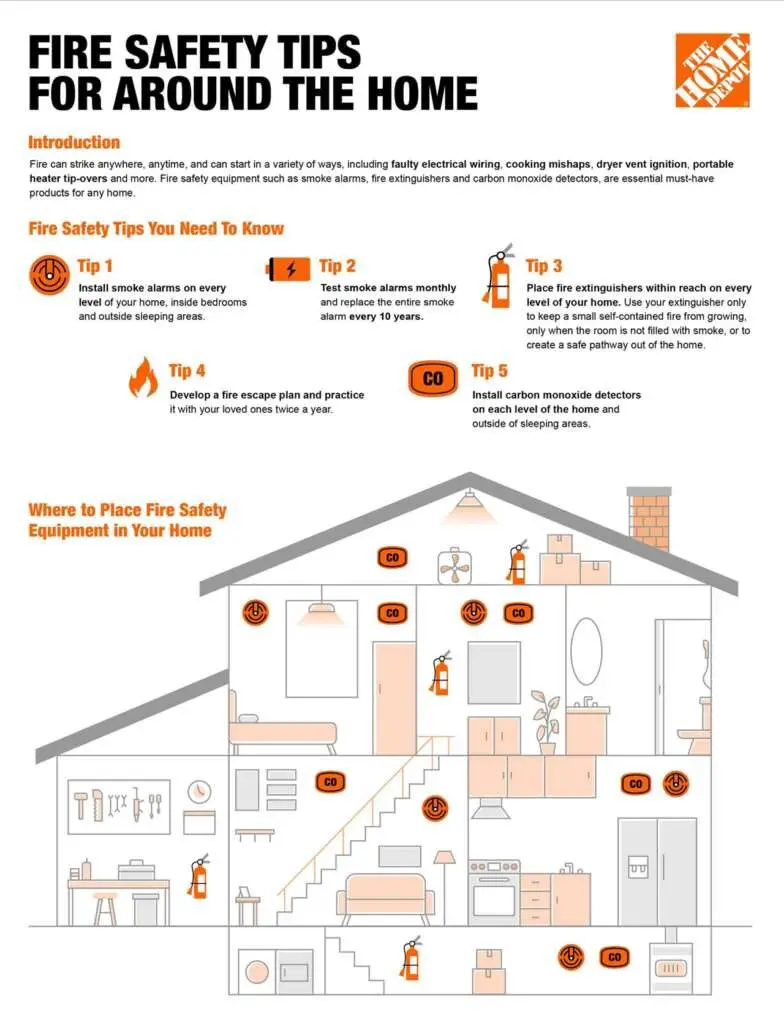
Heading 5: Placement and Testing of Smoke Alarms
Subheading 5-1: Proper Ventilation
Proper ventilation is essential in a tiny home to prevent the buildup of smoke, fumes, and carbon monoxide. Here’s what you should consider for ventilation:
-
Install exhaust fans: Install exhaust fans in the kitchen, bathroom, and other areas where there is a potential for moisture or fume accumulation. These fans help remove odors, smoke, and excess moisture, reducing the risk of fire and improving air quality.
-
Maintain air circulation: Proper air circulation prevents stagnant air and reduces the accumulation of particles that can ignite. Keep windows and vents open whenever possible to allow fresh air to enter and circulate throughout the tiny home.
-
Regularly clean ventilation systems: Dust and debris can accumulate in ventilation systems, reducing their effectiveness and potentially causing fire hazards. Clean ventilation systems regularly and replace filters as recommended by the manufacturer.
Subheading 5-2: Flammable Material Storage
Proper storage and placement of flammable materials are crucial in a tiny home to minimize fire risks. Consider these tips for safe storage:
-
Store flammable materials away from heat sources: Store flammable materials, such as cleaning agents, paints, and fuels, away from heat sources and open flames. This includes keeping them away from stoves, heaters, electrical outlets, and unprotected light bulbs.
-
Use designated storage areas: Designate specific storage areas for flammable materials and make sure they are well-ventilated and away from living or sleeping areas. Use approved storage containers and label them properly.
-
Securely close containers: Ensure that containers holding flammable materials are tightly closed to prevent spills or leaks. Properly dispose of empty containers and rags used with flammable substances.
Heading 6: Emergency Exits
Subheading 6-1: Clear Pathways and Obstructions
Having clear pathways and unobstructed emergency exits is crucial for the safety of occupants in a tiny home. Consider the following:
-
Keep pathways clear: Regularly check your tiny home’s pathways to ensure they are free from clutter, furniture, and any objects that could impede your escape in a fire emergency. Clear pathways allow for easy and quick evacuation.
-
Remove obstructions near exits: Ensure that emergency exits, such as doors and windows, are not obstructed by furniture, decorations, or excessive plants. Quick and unobstructed access to exits is vital in case of a fire emergency.
-
Install emergency exit signs: Consider installing emergency exit signs to clearly mark the locations of emergency exits in your tiny home. This helps occupants quickly locate the nearest exit during a fire emergency.
Subheading 6-2: Fire Escape Plans
Creating and practicing fire escape plans is essential in a tiny home. Here’s what you should consider:
-
Know your escapes routes: Familiarize yourself and other occupants with the escape routes in your tiny home. Identify two ways to exit each room, including alternate escape routes in case one is blocked.
-
Have a designated meeting point: Designate a safe meeting point outside your tiny home where all occupants should gather in the event of a fire. This ensures accountability and allows you to quickly determine if everyone has escaped safely.
-
Practice fire drills: Regularly conduct fire drills to practice your fire escape plan. This helps ensure that everyone knows what to do and where to go in case of a fire emergency. Practice simulated scenarios and vary the time of day to simulate different conditions.
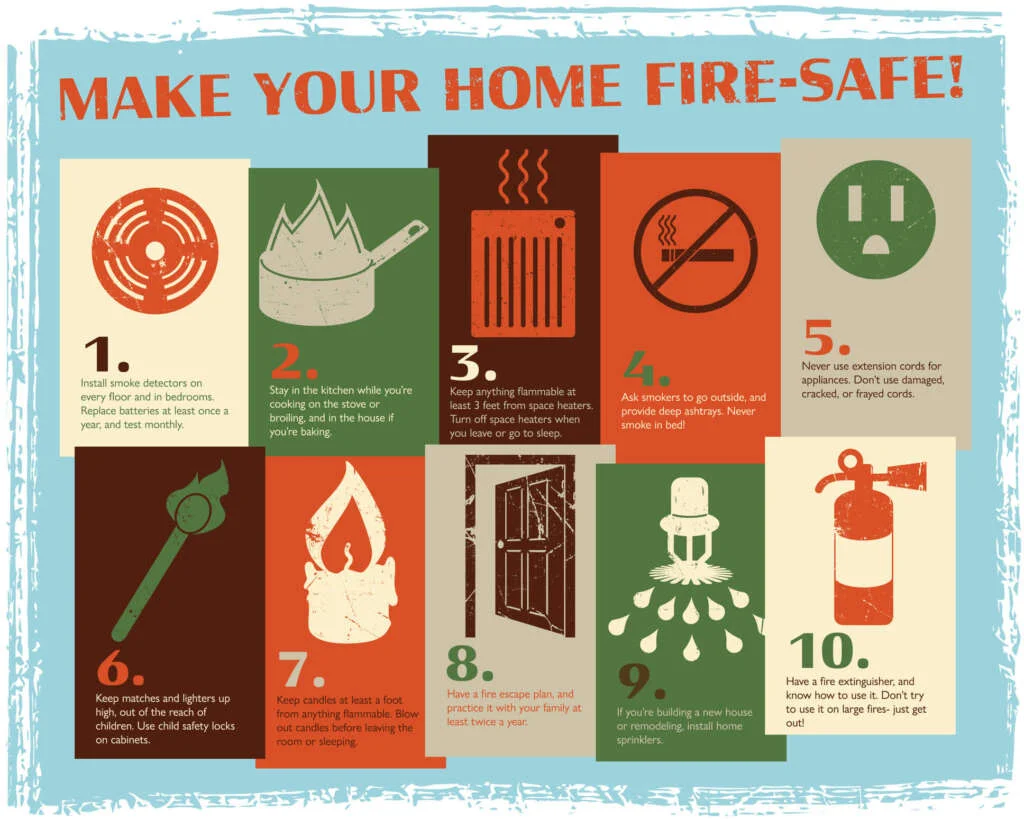
Heading 7: Ventilation Systems and Fans
Subheading 7-1: Proper Handling and Maintenance of Ventilation Systems
Ventilation systems play a critical role in maintaining air quality and preventing the buildup of smoke or fumes. Consider these tips for proper handling and maintenance:
-
Follow manufacturer’s instructions: Follow the manufacturer’s instructions for properly operating and maintaining your ventilation system. This includes regular cleaning, filter replacements, and addressing any issues promptly.
-
Schedule professional inspections: Engage a professional to inspect your ventilation system periodically. They can identify any potential issues, including blockages or malfunctions, and ensure that your ventilation system is operating efficiently and safely.
Subheading 7-2: Safe Handling and Storage of Flammable Materials
When handling and storing flammable materials in a tiny home, it’s essential to follow safety protocols. Here are some tips to follow:
-
Keep flammable materials away from ventilation systems: Avoid storing flammable materials near any ventilation system openings or ducts. This reduces the risk of flammable materials accidentally being drawn into the ventilation system and increasing the risk of fire.
-
Use proper storage containers: Store flammable materials in approved containers that are tightly sealed. This helps prevent leaks and reduces the chance of flammable materials coming into contact with ventilation systems or fans.
-
Educate yourself on proper handling: Familiarize yourself with the safe handling procedures for flammable materials. Follow guidelines for proper storage, transportation, and disposal of such materials. Educate yourself and others in your tiny home on the potential fire hazards associated with different flammable materials.
Heading 8: Emergency Exits
Subheading 8-1: Clear Pathways and Obstructions
Ensuring clear pathways and unobstructed emergency exits is crucial for the safety of occupants in a tiny home. Consider the following:
-
Keep pathways clear: Regularly check for any obstructions or clutter in your tiny home’s pathways. This includes ensuring that hallways, staircases, and doorways remain clear of any objects that could hinder quick evacuation in the event of a fire.
-
Install emergency lighting: In the case of a power outage or smoke-filled environment, it’s essential to have emergency lighting to guide occupants to the nearest emergency exits. Install battery-powered emergency lights or have battery-operated flashlights readily accessible.
-
Regularly review and update exit plans: Review and update your fire evacuation plan periodically to account for any changes in your tiny home’s layout, furnishings, or occupant needs. This ensures that your plan remains effective and up to date.
Subheading 8-2: Fire Escape Plans
Having a well-thought-out fire escape plan in place is crucial for the safety of everyone in your tiny home. Consider the following tips:
-
Create detailed escape routes: Map out clear and concise escape routes from each room in your tiny home. Ensure that each occupant understands the designated escape routes and alternative exits in case their primary escape route is blocked.
-
Practice fire drills: Regularly conduct fire drills to practice the fire escape plan with all occupants. This helps familiarize everyone with what to do in an emergency and ensures that they can evacuate safely and efficiently.
-
Assign roles and responsibilities: Designate specific roles and responsibilities to each occupant during a fire emergency. This may include individuals assisting children or those with mobility challenges, ensuring pets are safely evacuated, or calling emergency services.
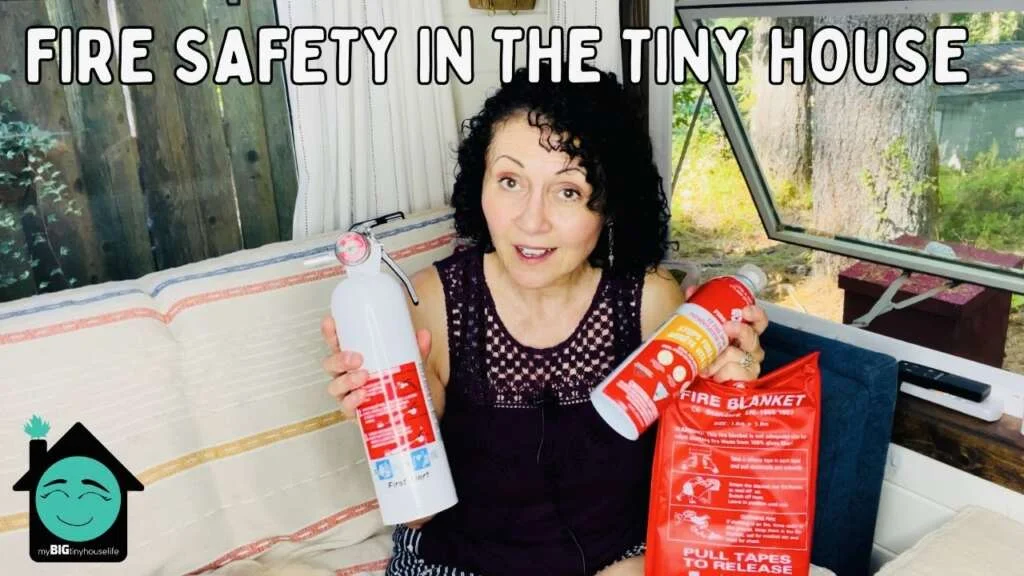
Heading 9: Clear Pathways and Obstructions
Subheading 9-1: Regular Maintenance of Pathways
Maintaining clear pathways and preventing obstructions is paramount for the safe evacuation of a tiny home during a fire emergency. Consider the following tips:
-
Regularly clear clutter: Conduct regular checks of your tiny home’s pathways to ensure they remain free of clutter. Remove any objects, furniture, or other items that may impede evacuation in the event of a fire.
-
Secure loose electrical cords: Ensure that electrical cords are properly secured and do not obstruct walkways. Loose cords can pose a tripping hazard and hinder evacuation.
-
Minimize trip hazards: Keep the floor of your tiny home clear of any potential trip hazards, such as area rugs or loose carpeting. Secure mats and rugs to prevent them from causing falls or impeding movement.
Subheading 9-2: Regular Drills and Practice
Regular practice and drills are essential to ensure that everyone in your tiny home can respond effectively in a fire emergency. Consider the following tips:
-
Schedule regular fire drills: Conduct fire drills at regular intervals to practice the evacuation plan with all occupants. This includes practicing different scenarios, such as fire starting in different rooms or exits being blocked, to simulate real-life situations.
-
Rehearse different evacuation routes: During fire drills, practice using alternative escape routes in case the primary escape routes are blocked by smoke or fire. This helps prepare occupants to adapt to changing circumstances and increases the likelihood of successful evacuation.
-
Discuss emergency procedures: Regularly discuss emergency procedures with all occupants of your tiny home. Ensure everyone understands the fire escape plan, knows how to operate fire extinguishers, and is familiar with the location of emergency exits and meeting points outside the home.
Heading 10: Fire Safety Education
Subheading 10-1: Fire Safety Education
Educating yourself and other occupants of your tiny home on fire safety is critical for prevention and quick response in an emergency. Consider the following:
-
Fire safety training: Stay updated on fire safety practices and techniques by attending fire safety training programs or workshops. These can provide valuable knowledge on fire prevention, detection, and evacuation procedures.
-
Stay informed about local regulations: Familiarize yourself with local fire safety regulations and building codes specific to tiny homes. These regulations may have specific requirements for fire suppression systems, smoke alarms, and emergency exit plans.
-
Share fire safety resources: Share fire safety resources and information with other members of your tiny home community or those considering living in a tiny home. By spreading awareness and knowledge, you can contribute to a safer living environment for all.
Subheading 10-2: Fire Extinguisher Training
Knowing how to properly use a fire extinguisher is an essential skill for fire safety in a tiny home. Consider the following tips:
-
Attend fire extinguisher training: Enroll in a fire extinguisher training course to learn how to operate different types of fire extinguishers effectively. These courses provide hands-on practice and knowledge on choosing the right fire extinguisher for specific fire types.
-
Understand the PASS technique: Familiarize yourself with the PASS technique used to operate fire extinguishers. PASS stands for Pull the pin, Aim at the base of the fire, Squeeze the handle, and Sweep from side to side. Remembering this technique can help you react quickly and effectively in case of a small fire.
-
Regularly inspect fire extinguishers: Routinely check your fire extinguishers to ensure they are fully charged and in proper working condition. Replace or recharge any extinguishers that show signs of damage, low pressure, or expiration.
By following these fire safety considerations for a tiny home, you can significantly reduce the risk of fire and ensure the safety of you and your loved ones. Remember, prevention, proper maintenance, and consistent practice are the keys to fire safety in any living environment, no matter how small. Stay safe and protect your tiny home from the devastating consequences of fires.
